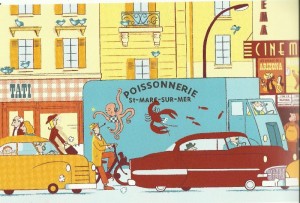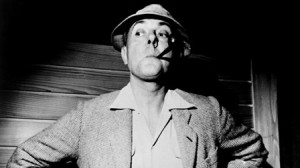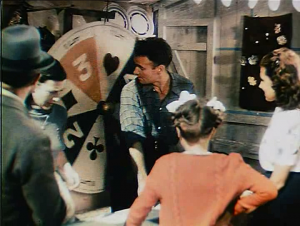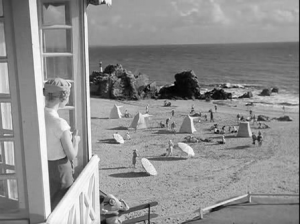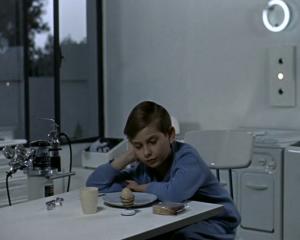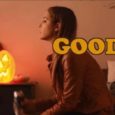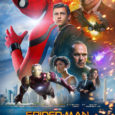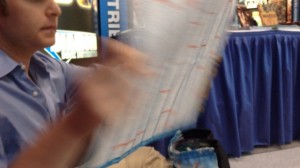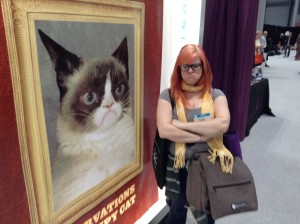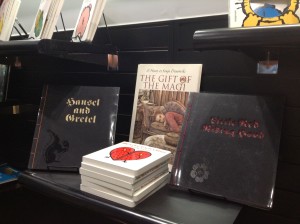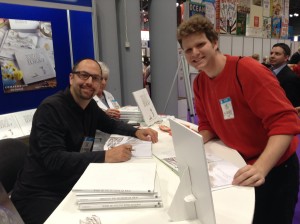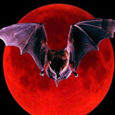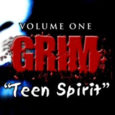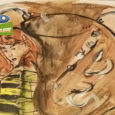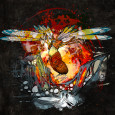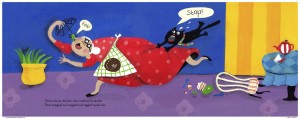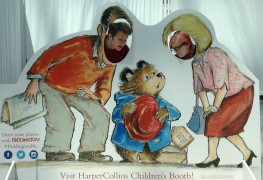Happy Summer! It’s time for the first of my Summer Film Showcases! These are things that make me happy; and I want to share them with you!
Mid-20th Century French film director and actor Jacques Tati is one of my favorite movie makers ever and his offbeat, often nostalgic but also critical approach to cinema and the summer-y and idealistic atmosphere in at least 3 of his films makes his work a perfect summer film showcase. If you’re a film enthusiast and know of Tati, you’ll know what I mean. If not, I’m so excited to introduce you to him and his films as well as his continued legacy.
Tati, born Jacques Tatischeff (his family was of Russian nobility descent, go figure) is known for his ridiculously short filmography; he directed 9 films, only 6 of them feature films. He has more writing credits to his name as well, but he’s mostly known as being the writer/director/actor to his films. At first a writer and comedic actor specializing in sporty mime in the 1930’s, he later fell into directing and Tati gained attention for his short film “L’Ecole des facteurs” (“The School for Postmen”) in 1947.
Tati’s films are unique in that they are mostly dependent on visual comedy and sight gags. They’re not silent films per se, as there is often a little dialogue, but it’s often only background chatter and atmospheric sounds. And music of course. Often comical. In a way his films more accurately continue the tradition of silent cinema comedy, whilst being neither a silent nor an actual dialogue laden film. 2/3rds of the Disney/Pixar film Wall-E (2008), sans the later involvement of the speaking human characters and computer, actually fits into this category of visual comedy. It’s the genre of non-silent, silent film.
Jour de fete, filmed in 1947 and released in 1949 was his first feature film. Starring Tati himself as a bumbling and easily distracted postman in rural France, the film shows the postman’s daily routine as he gets distracted, particularly by the local traveling country fair and his later crusade to emulate the (then efficient) United States postal service. The film was meant to be in color; in fact intended to be the first French film to be in color; but due to issues all over the board it wasn’t to be, ultimately. The released black-and-white version actually has bursts of color hand painted by Tati himself in the film, but there is also a restored color version, which is charming (and the version I watched). This film starts to set up themes and conventions you see in later films; namely warm affection for rural or “old” pre-war France, and how individuals are struggling to keep up with modernity. This one has more dialogue than his later films.
The big part of this showcase are my two favorite films of his; Les Vacances de Monsieur Hulot (Mr. Hulot’s Holiday) (1953) and Mon Oncle (My Uncle) (1958)
Les Vacances, his second feature film,is the breeziest of Tati’s works; droll and effervescent, it’s summer personified. I had the pleasure of actually watching this for the first time while I was at the beach myself and so watched it with lingering smells of actual sunscreen and salt about the place; so dab on sunscreen while watching this! (btw there’s actually a perfume based on this film! It smells like petrol, sun lotion and sea salt.)
Shot in black and white, this is a beautiful on location depiction of the French Saint-Marc-sur-Mer region in the Loire Atlantique. This film introduces Tati’s alter ego, the naive and socially awkward, pipe smoking gentlemen Mr. Hulot as he takes an August holiday to the beach. The film is just, so lovely. Full of sight gags, wonderfully composed shots and a chill jazz score by Alain Romans, the film is nostalgic, sweet and yet a little biting. There is some social class parody and criticism here, particularly making fun of capitalists, young Marxist-type intellects and stuffy upper class people all of whom can’t seem to ever relax. It definitely fits within Tati’s preoccupation to criticize the shift from “old” France and enjoying simple things to the Post-War “work” consumerism. The masquerade party scene in particular is striking in it’s gentleness and yet bittersweet criticism of people. It’s one of my favorite films.
His next one, Mon Oncle is in glorious color. I’ve written about it before, but it stands as my favorite. Monsieur Hulot returns, this time with his family. Hulot is the odd ball bachelor and favored uncle to nine-year-old Gérard (Alain Becourt), who lives with his parents, M. and Mme. Arpel (Jean-Pierre Zolla, Adrienne Servantie) in a new Americanized, modernized and completely sterile monstrosity of a neighborhood. Hulot lives in a small apartment in the older more run down (and at the time being torn down) section of town; which clings to a more rustic and old fashioned way of life. Tati continues his “fish out of water” in regards to Hulot trying to exist (and failing) within modern sterile materialism and dealing with how impersonal his family has become.
There is a slightly more enforced plot here than the loosely structured Vacances; Gérard, bored with his life, adores and hangs out with his uncle as much as possible, accompanying him in various outings and pulling pranks on adults with his school friends. Meanwhile Mme. Arpel is bent on getting her “wayward” brother Hulot a job and make him more appropriate for their social sphere so they strive to get him a position at M. Arpel’s plastic hose factory. Mayhem ensues. A lot of this humor and criticisms of impersonality, especially when raising children, can be still applied to today. To get a taste for the film check out the infamous “kitchen scene” here. There’s a lot of heart in this film, and it too is one of my favorites. 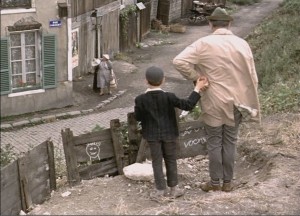 The movie is visually beautiful and unique, dogs pepper the film as they run about the neighborhoods.
The movie is visually beautiful and unique, dogs pepper the film as they run about the neighborhoods.
The character of Monsieur Hulot returns in two more Tati films; Play Time (1967) and Trafic (1971). Play Time itself a force to be reckoned with so I will feature them in their own feature later in the summer.
Mr. Hulot additionally lives on in other mediums; an unproduced script was turned into the animated film The Illusionist (2010) with the lead based on Tati himself.
Additionally, french artist David Merveille with perennial favorite NorthSouth books has additionally released just last summer the amazing picturebook Hello Mr. Hulot a book full of gorgeous illustrations featuring the clumsy Mr. Hulot as we view different visual scenarios, often with a touch of the whimsical or outlandish and continue the tradition of Tati’s physical comedy quite well. 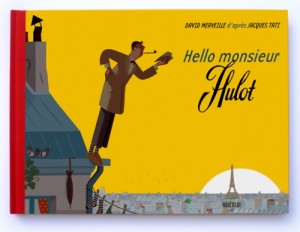 And it’s great to see such a legacy be kept alive through a medium that can fully embrace what Tati did in his films. Snappy, bright colors and a fine balance between modernism and Tati’s mid-century work. I think the book deserves a place on any film buff’s shelf, and for anyone who appreciates good design.
And it’s great to see such a legacy be kept alive through a medium that can fully embrace what Tati did in his films. Snappy, bright colors and a fine balance between modernism and Tati’s mid-century work. I think the book deserves a place on any film buff’s shelf, and for anyone who appreciates good design.
You can buy these films and Hello Mr. Hulot! on Amazon or Netflix or check your local bookstores!
- Hardcover: 32 pages
- Publisher: NorthSouth; First American Edition edition (September 1, 2013)
- Language: English
- ISBN-10: 0735841357
- ISBN-13: 978-0735841352
- Product Dimensions: 9 x 10.9 x 0.4 inches
max@sub-cultured.com
Twitter: @maxlikescomics
For an (almost) mid-week break, I have another beautiful picture book from NorthSouth that I heartily recommend for kids of all ages and for those who love illustration. This time it’s Two Parrots, a fun American debut from Iranian illustrator and animation director Rashin. Her new book Two Parrots is inspired by a tale from Rumi. Rumi, or Jalāl ad-Dīn Muhammad Balkhī (Persian: جلالالدین محمد بلخى) was a 13th century poet, theologian, and Sufi mystic (basically a really amazing guy). Rashin, or Rashin Keiriyeh, born in Iran and already prolific children’s book illustrator with over forty-five books under her belt is well known overseas. This however, is her first release in America!
Featuring beautiful illustrations that pull from traditional Persian art but are presented with a fresh, friendly folk-art spin, the colors green and red dominating the piece, Two Parrots is overall a neat little book. Rashin’s art fits the simple but whimsical story about a merchant and his pet parrot, who is unhappy about living in a cage.
Rashin’s body of work is already massive; she’s also worked in animation and is just an immense talent. America has just gotten the first taste of her with some editorial work, this and her follow-up; her own version of There Was An Old Lady Who Swallowed A Fly coming this fall. I hope this first translated debut and There Was An… means a lot more of her books released in countries like South Korea, Spain and France will be coming over to the States in the near future. Publisher NorthSouth always excels in releasing fun, engaging books with a global mindset. If you have kids or enjoy illustration, their artful, whimsical titles are always always worth checking out. I’m always excited to explore their catalog and look forward to reviewing more titles from them for you in the future! Again, hopefully that entails even more Rashin.
See you all real soon!
Max Eber
max@sub-cultured.com
Twitter: @maxlikescomics
Hello all!
I’ve thawed from my frozen tomb! Like our new digs? I’m looking forward to writing some great features and interviews for everyone.
Today, however I have a small but nevertheless charming collection of books from NorthSouth Books, one of my favorite publishers, that I’ve been itching to share.


